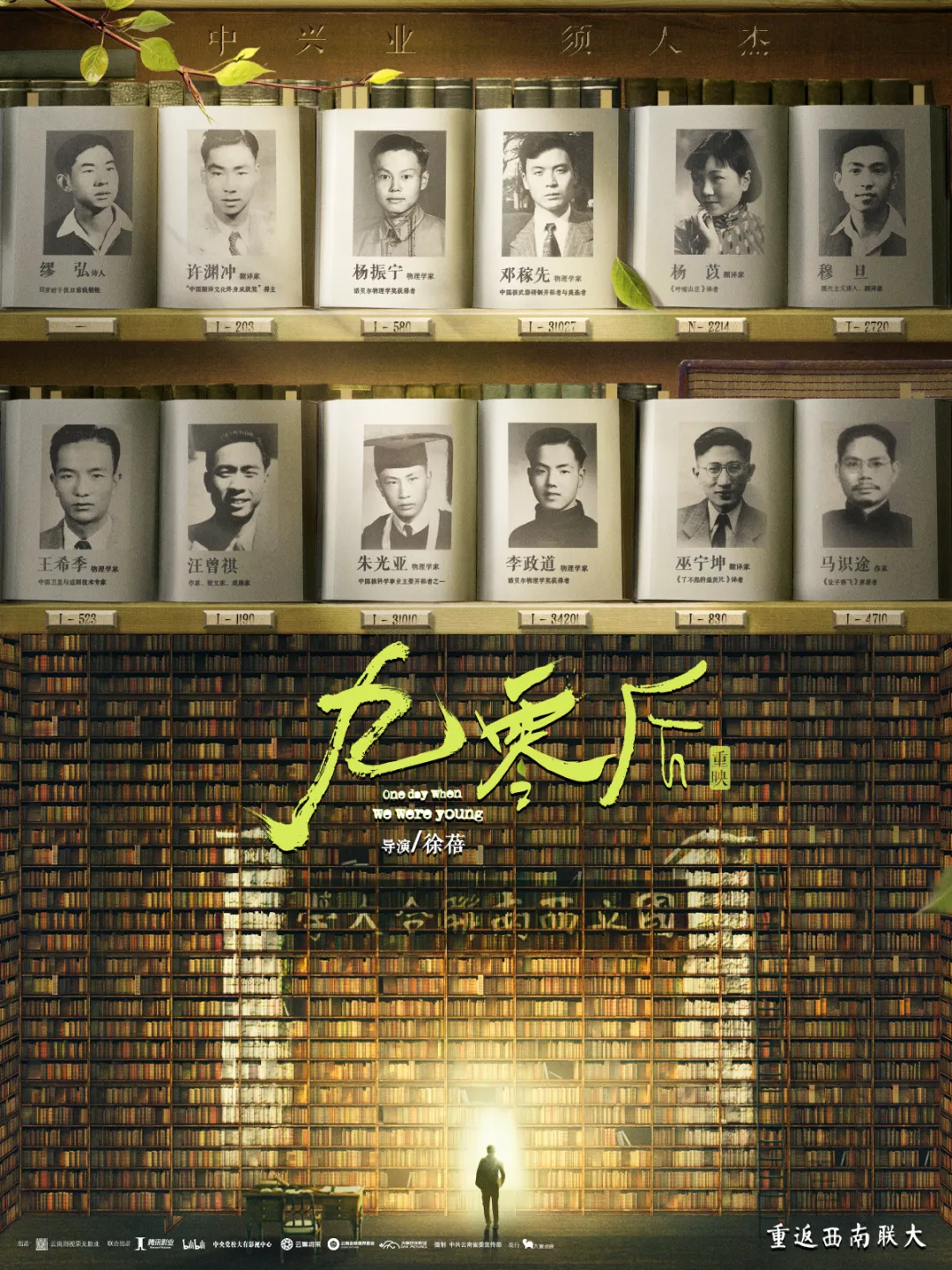
"Volunteers: Heroes Attack" is the first part of the trilogy to resist U.S. aggression and aid Korea. The next two films are scheduled to be released next year and the year after respectively. The trilogy is all directed by director Chen Kaige. It is a rare masterpiece in recent years that shows the war to resist U.S. aggression and aid Korea in a panoramic manner.
"Panorama war film" was first pioneered by the Soviet Union. The "Liberation" produced in the 1970s described the Soviet Union's process from a general counterattack to the conquest of Berlin and the elimination of fascism during World War II. It was created in 5 films with a total length of 487 minutes. An unprecedented example in the history of world cinema. "The Battle of Moscow", which was introduced to domestic cinemas in the 1980s, is also astonishing with its total length of 358 minutes.
In the early 1990s, our country began to produce "The Great War", which described the three major battles between the Kuomintang and the Communist Party, and later produced films such as "The Big Turn" and "The Great March", which were all continuations of panoramic war films. In particular, the "Armageddon" trilogy has been rebroadcast many times on movie channels and is a war movie classic in the hearts of many viewers.
Starting from 2020, as many outstanding young directors co-produced "King Kong River" and "Changjin Lake", panoramic war films have finally stepped out of the creative route centered on the Bayi Film Studio and turned to a more market-oriented one. It also has a more fashionable and youthful style.
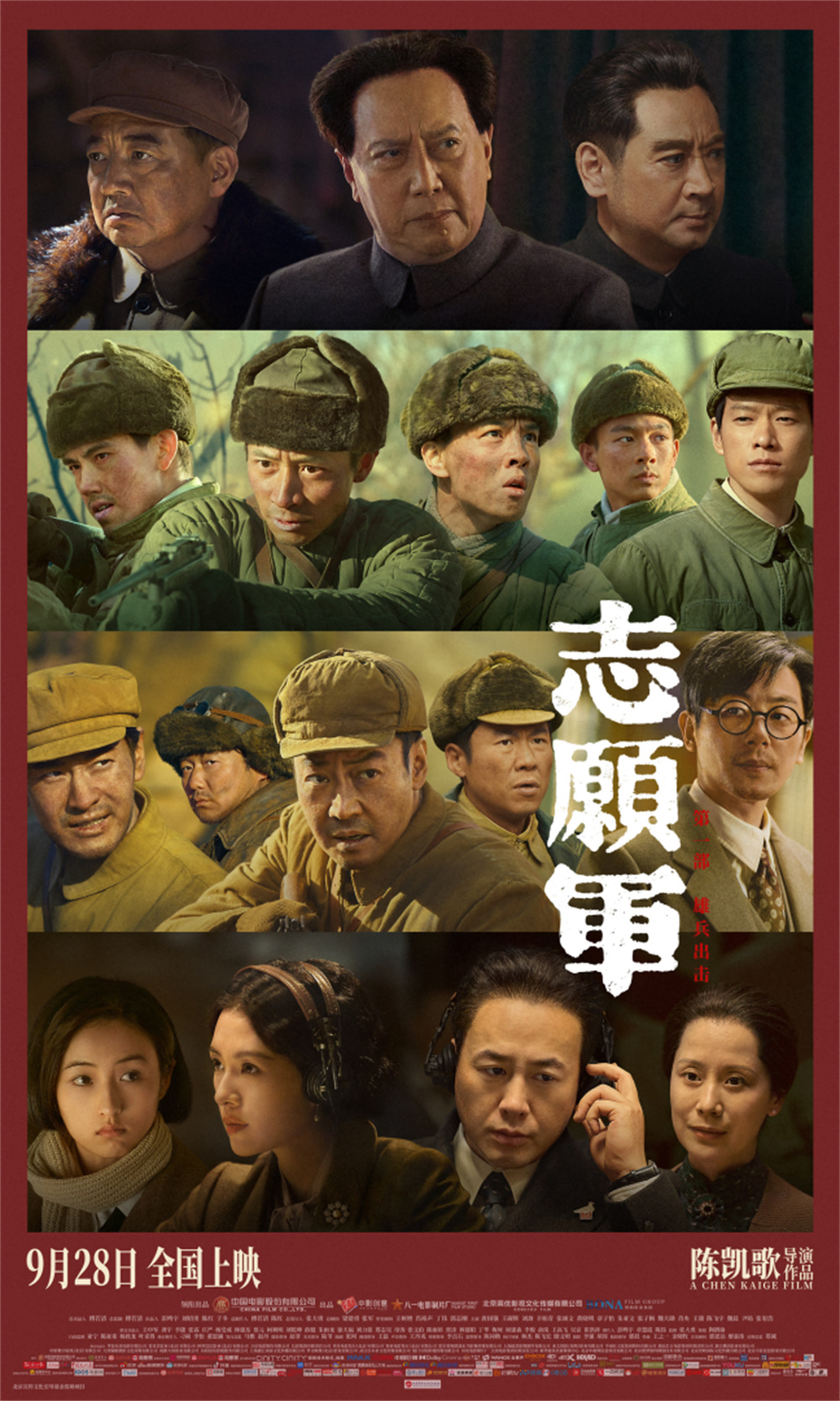
"Volunteer Army: Heroes Attack" poster
Director Chen Kaige filmed the beginning of "Changjin Lake" produced two years ago, describing the beginning of the War to Resist US Aggression and Aid Korea. He clearly had more to say. Directing the trilogy this time allowed him to more completely implement the creative concept, and at the same time reflect the artistic effect he wanted to achieve in terms of overall style and rhythm, rather than just a "story platter".
For this type of film, because its theme, length, and historical events that should be shown all have specific requirements and meanings, they cannot be criticized harshly according to the standards of ordinary commercial films. Understanding which events were selected for adaptation in the film, where innovative breakthroughs were made, and learning more about the relevant real historical background based on the story may bring more gains to young audiences.
Objectively speaking, although the film is close to 2 and a half hours long, the pace of each scene is very fast. The film is overall very compact compared to the slower feel of previous films of the same genre. At the same time, literary drama and action drama are intertwined with each other, focusing on parallel processing and contrast, showing the director's mature artistic conception. Of course, because there are too many events that need to be shown, the dramatic conflicts cannot be concentrated too much, and can only be dealt with in sections. The further you look at it, the more it will still give people a feeling of being lengthy and scattered.
This is an unavoidable problem in "panoramic war films". When showing large battles, countless perspectives are intertwined, from the international political situation to the trenches where every inch of land is contested, from the commander to the soldiers. The vision of different characters is actually scattered and fragmented. For modern movies, this will create a theme that is not focused enough. Even in "Dunkirk" directed by Nolan, similar problems still exist.
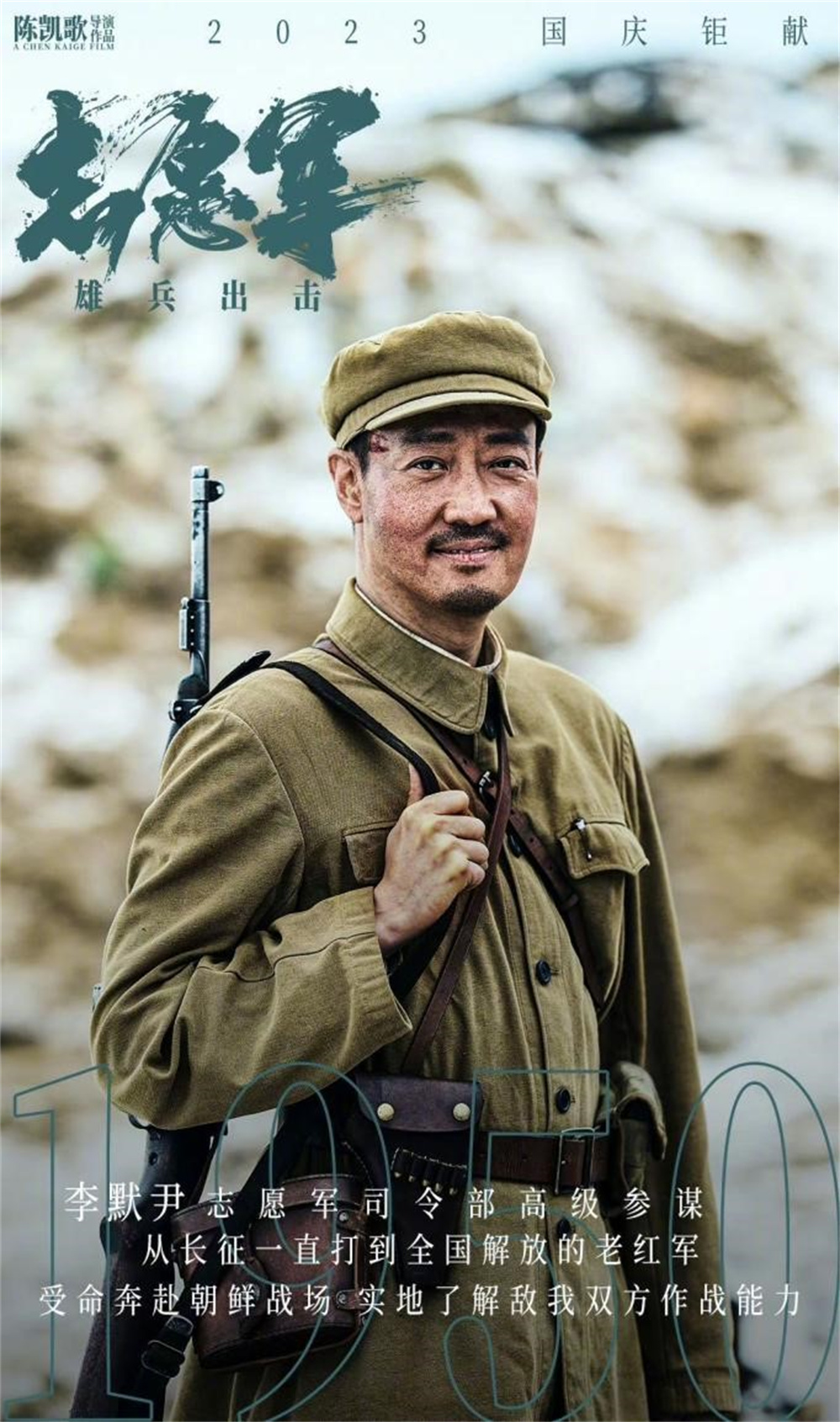
Li Moyin is a fictional character, but as a threading character in the story, he coherently opens up the perspectives of people at different levels.
Compared with previous films, Director Chen Kaige tried his best to combine the leaders and soldiers through several consecutive appearances and cross-class characters, such as General Peng Dehuai and his generals, Mao Zedong and Mao Anying's father and son, or Li Moyin played by Xin Baiqing, to form a A spiritual community that protects the homeland and the country. At the same time, "names" were matched for a large number of soldiers who died at the grassroots level, which to a certain extent abandoned the problem of "named leaders and fictional unknown soldiers" in previous similar films. At the end of the film, in the Easter egg shown for the next part, you can also see Li Xiang (played by Zhu Yilong), an instructor on the front line who is in the midst of war, and a younger sister Li Xiao (played by Zhang Zifeng) who is also fighting for the country at the United Nations General Assembly in New York.
The character Li Moyin is a fictitious character who serves as a senior staff member of our army and goes deep into front-line operations. Characters such as Li Xiang and Li Xiao are strictly the original works of screenwriter Lan Xiaolong. The main function is to run through different narrative sections. The original novel written by Lan Xiaolong for the film is called "War and Sacrifice", which has not yet been officially published. However, the original novel "Winter and the Lion" accompanying the film "Changjin Lake" has been published, and some trial copies are included for those who are interested. You can find it and read it. This story structure with family ties on different battlefields is similar to American writer Herman Walker's novel "War and Memories" describing World War II. It is a creation that combines the virtual perspective of the novel with the balanced historical event reportage. Technique.
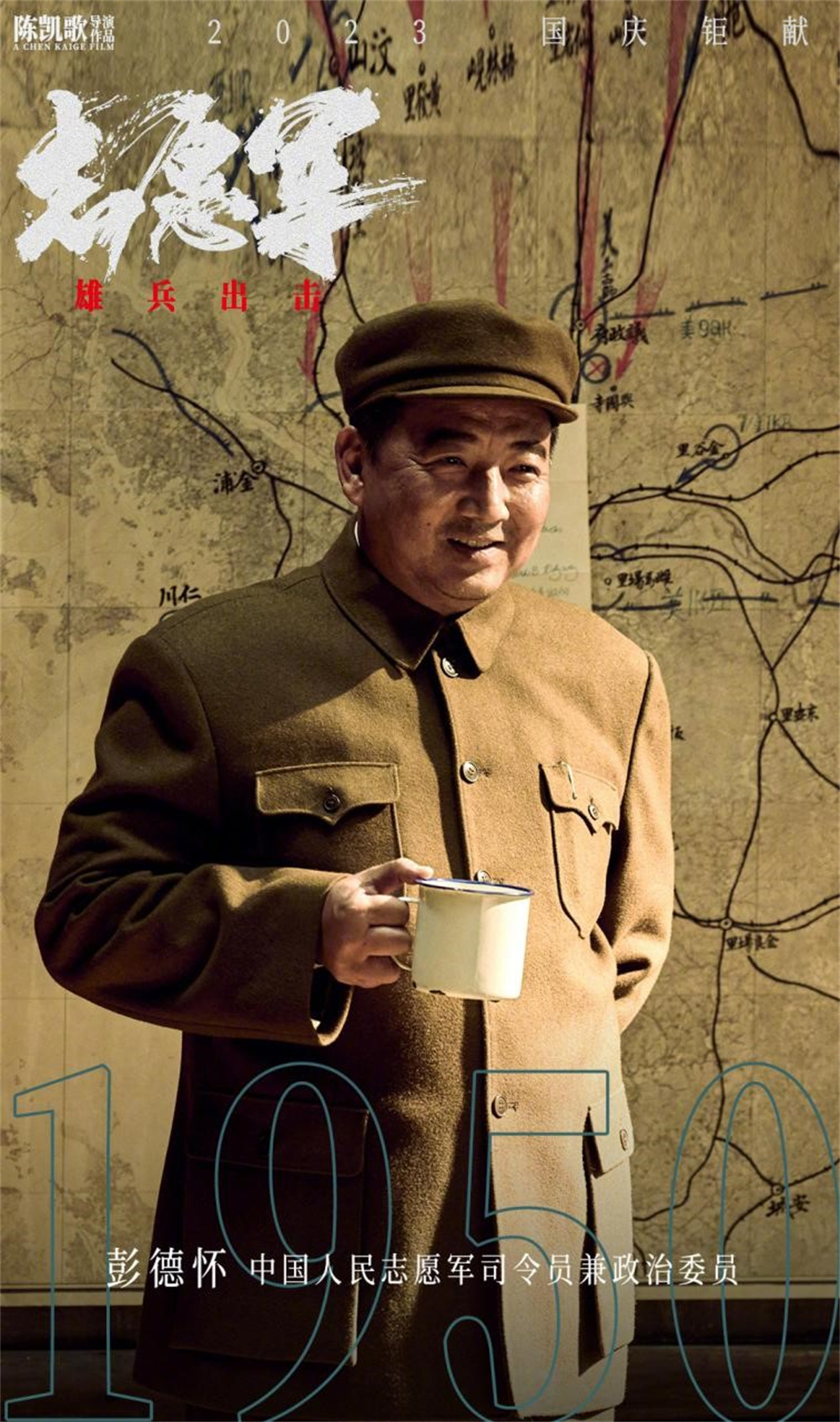
Among the roles of leaders, actor Wang Yanhui plays Marshal Peng Dehuai, which is a novel choice. Judging from the effect, Teacher Wang's performance gives the character a vivid charm.
Under Lan Xiaolong's overall literary structure, "Volunteer Army" is roughly divided into five paragraphs, each with its own focus.
The first part describes the process of our country's leadership deciding to send troops to reinforce the Korean battlefield. The historical events are basically organized according to time, which may be a little loose, but mainly to comprehensively explain the impact of various events at that time on the top-level decision-making.
Some events and processes, such as the U.S. military sending warships to blockade the Taiwan Strait, sending planes across the border to bomb Chinese civilians, or the Soviet Union's refusal to immediately provide air force fire support to our troops aiding North Korea, these events are obviously documented and true history. . In addition to this part, the film also fictionalizes and incorporates some small story passages, such as the dialogue between Chairman Mao Zedong and the people's representatives after the National Day Fireworks Festival in 1950, especially the exchange with Dr. Lin Qiaozhi, which prompted him to send troops to North Korea. Determination.
Dr. Lin Qiaozhi, as a master of obstetrics who has delivered tens of thousands of babies and a well-known national model worker, her identity and significance of "welcoming new life" and the first anniversary of the founding of the Republic, the leaders' responsibilities and expectations for New China have obviously formed a kind of Literary theme echoes. This small plot is very important to the direction of the story. It is the last link to promote major decisions, but it is hidden among many real events and is not obvious. It reflects the director's mature and mature creative style. .
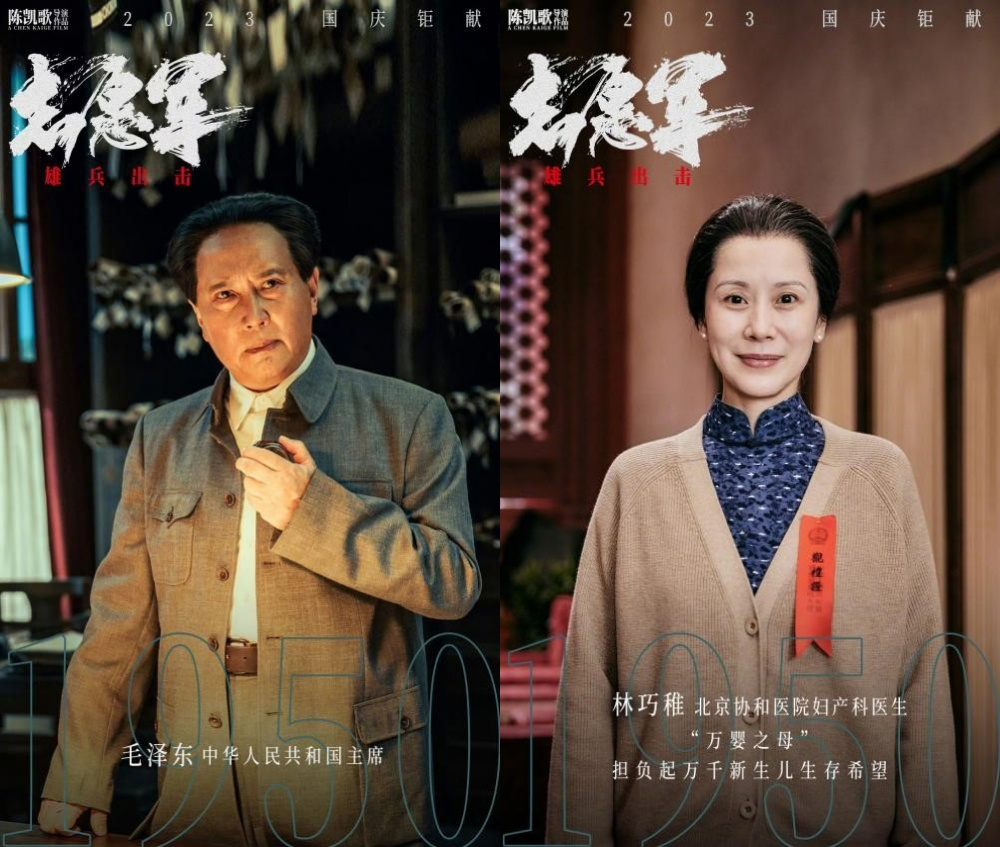
From the President of the Republic to ordinary workers, the cross-class dialogue seems random, but it is actually a very groundbreaking plot setting.
After the troops are dispatched, the film enters the second paragraph describing the initial situation on the battlefield.
This part of the story takes the Battle of Yunshan, the first encounter between our army and the US military, as the main content. It focuses on describing how a group of officers and soldiers led by Deng Yue, commander of the 118th Division of the 40th Army, won the first battle in Liangshuidong and other areas. the process of. Some of the descriptions are anecdotes, which are probably based on real historical events. For example, Deng Yue was still mending his pants when the enemy attacked, which became the object of everyone's jokes later. Almost all of the communications platoon died in order to cover the retreat of the main force. In the end, Li Moyin took away the surviving young soldier to help him with psychological training and recovery. In addition to the traditional encouragement of victory in battle, the screenwriter and director also expressed their understanding of "the battle in the war". A kind of care for human nature.

Victory and sacrifice, the film's parallel connection processing makes people feel a lot. There is no difference between them. They are all fighting for their lives on the battlefield for the motherland and the people.
After the victory in the first battle, the film quietly reaches an emotional low point. The story here includes that the commander of the 83rd Army, Liang Xingchu, was severely criticized by Marshal Peng Dehuai for delaying the fighter plane. It also includes a major event that cannot be avoided in all films depicting this period of history - Comrade Mao Anying died in an air raid.
Although a similar plot also appeared in "Changjin Lake", this film has an innovation. After Mao Anying's death, it did not show Comrade Mao Zedong's personal feelings for his son at all. Instead, it quickly switched to the same night, when our 38th Army The 118th Division began its attack on Tokugawa and ultimately won the battle.
This is a subtle but important innovation. It reflects the director's interpretation of historical events to a certain extent - the sacrifice of all soldiers, regardless of rank, is a sacrifice, and it is not more important because of the identity of one of them. At the same time, there are sacrifices in some places and victories in other places. All sacrifices and all victories are intrinsically connected, transcending space and transcending time.
From the logic of the story, the connection between sacrifice and victory connects different characters more closely. This is a community where all people should be treated as equals and strive to protect their country. There are only different fronts, no nobility of life.
——In the following stories, I believe the audience can see more such parallel settings across time and space, subtly expressing the screenwriter and director’s views on historical themes.
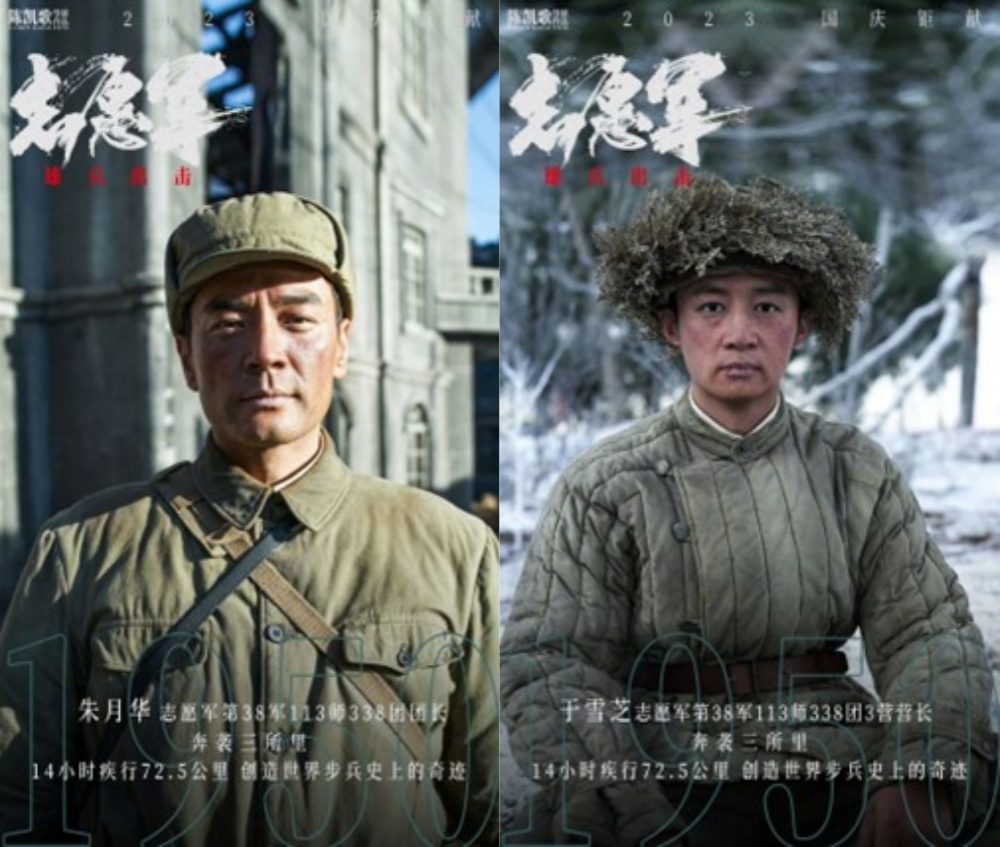
Many characters who died in the battle have their own names and are no longer just "nameless soldiers". From the poster to the video, everything is touching.
Although Tokugawa was captured, the 118th Division immediately rushed more than 70 kilometers within 14 hours to rush to Sanzongli to stop the escape of the US 9th Division. This is the next plot paragraph.
If you know something about our army's war history and tactics, you will understand that this part of the plot very importantly shows the characteristics of the People's Liberation Army. Our army's combat style can be traced back to the Red Army period, which is based on guerrilla warfare, long-distance raids, encirclement and annihilation. The main combat strategy. The formation of this style is due to the historical reasons why military equipment has lagged behind the enemy for a long time. It is also due to the summary of the tactical thinking of Comrade Mao Zedong and other leaders, as well as the long-term accumulation of capabilities and experience of our officers and soldiers in combat.
To put it simply, the troops are dispersed, and everyone runs forward desperately, running to their respective vantage points to fight together. When the enemy is unprepared, it is like a magic weapon descending from the sky, encircling and annihilating them all. During this process, there is often a lack of effective logistical supplies, and they run wild despite lack of food and clothing without any physical exertion. Finally, they kill the enemy in one breath and then lie down to rest. This is a very fierce and life-threatening combat strategy. It is simple to say, but there are very few armies in the world that can do it.
In this section, we can see ordinary soldiers who died during the march, a thrilling victory in seizing the position five minutes earlier than the US military, leaders and generals who were relieved after hearing that the troops were assembled, and a US tank that died together. Head-level cadres. Overall, this is a very complete and compact film, a thrilling success, and an extremely exciting and coherent plot. But the film doesn't end here yet. The last new chapter has begun.

The setting from the General Assembly to the battlefield is a connection and contrast that all viewers can understand. This is also the theme meaning that the screenwriter and director hope to achieve.
In the last part, one clue is that Wu Xiuquan and others who went to New York angrily denounced the American representatives at the United Nations General Assembly, and the other clue is that the officers and soldiers of the third company defended Songgu Peak, holding the most difficult gap for the large force to annihilate the enemy. The latter story is based on the famous reportage "Who is the Loveliest Person" by writer Wei Wei at that time. It is a famous article that allowed millions of compatriots across the country to understand the sacrifices of soldiers in the War to Resist US Aggression and Aid Korea.
The setting of these two parallel clues is in line with the famous assertion: "War is the continuation of politics" and "The negotiation table is the continuation of the battlefield." I believe that in the next two films, as the Korean battlefield enters more stages of stalemate, the director will show more of the struggle and competition between China and the United States at the negotiating table.

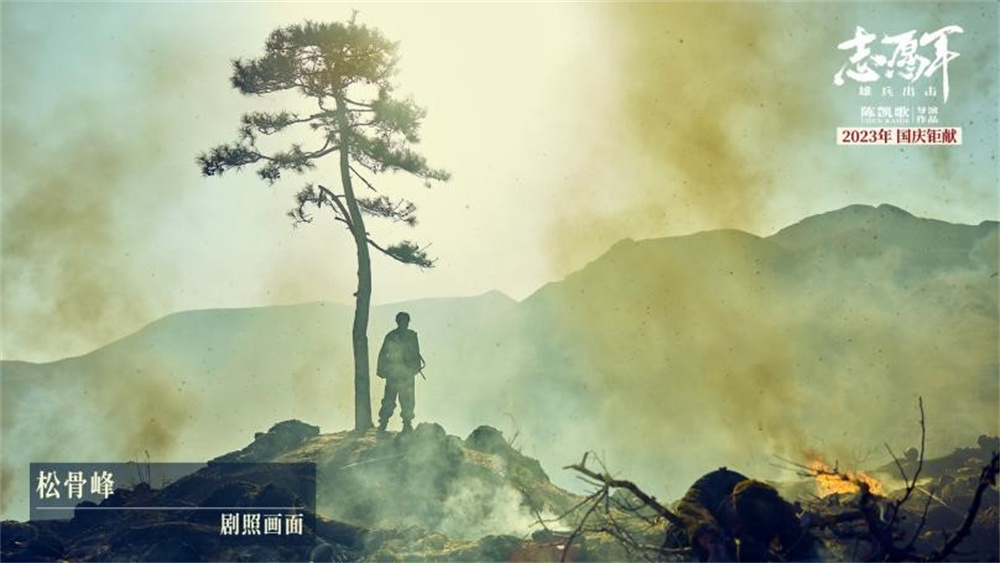
From the crowds of people to the only remaining trees, the contrasting meanings in literature and pictures are thought-provoking.
Generally speaking, this film is a very complex panoramic war film. Many details reflect the solid literary background of the screenwriter and director, and strives to show a large amount of historical content within a limited film duration. These contents may seem scattered, but they contain carefully designed organizational logic. Many of the scripts are solidly written, the battle scenes are also very grand, and the action design is top-notch.
Of course, the more important content is outside the film. The past is the lesson of the future. The history of resisting U.S. aggression and aiding Korea, all the sacrifices, hardships and efforts, in exchange for the growth of the nation and the country, is worth understanding and remembering by every Chinese. Its significance and value are self-evident. .
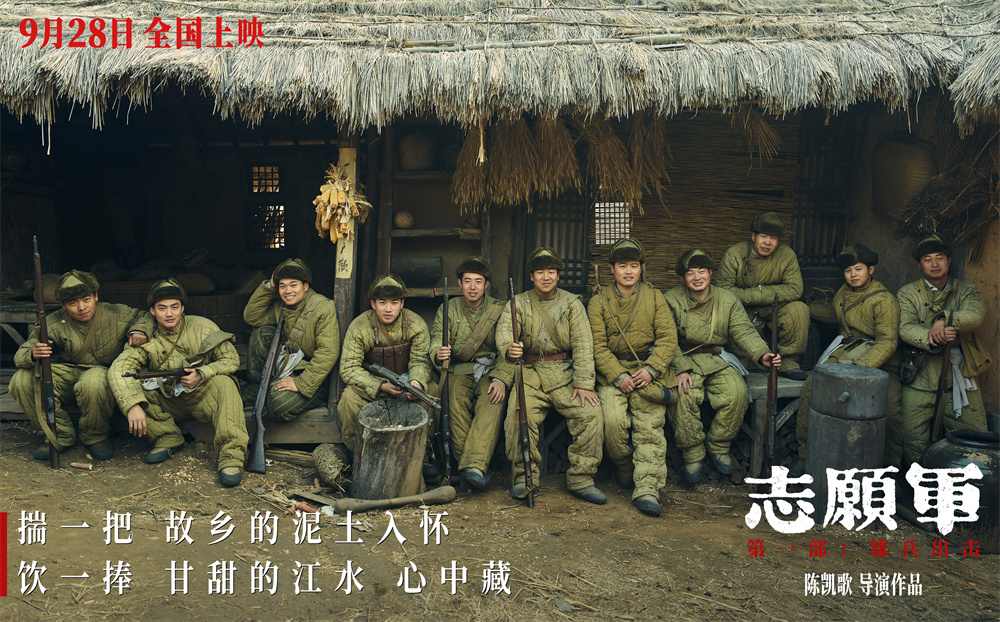
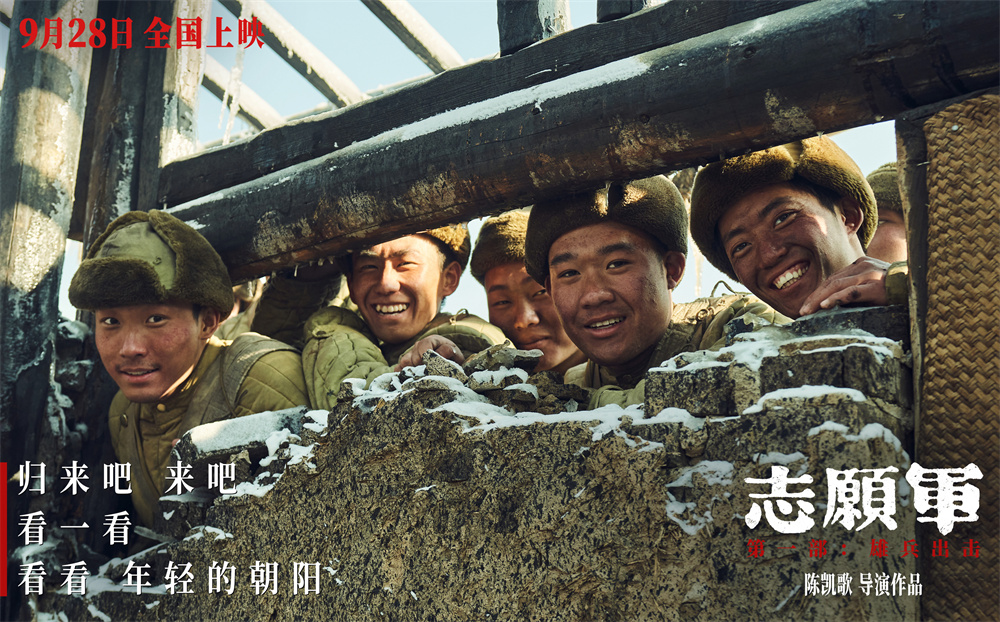
"Volunteer Army: Heroes Attack" stills


